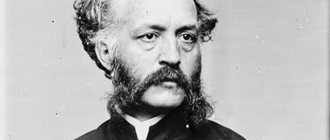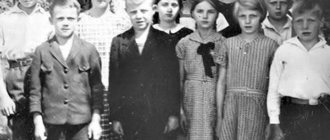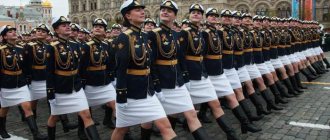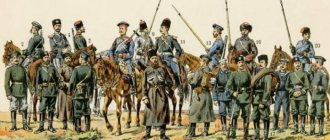On April 14, 1849, Sergei Ivanovich Mosin, a talented gunsmith designer, was born. The creator and organizer of the production of the legendary “three-line” weapon, which was used in different countries for many years. Its excellent qualities stood the test in the fire of the Russian-Japanese and the First World Wars. The Mosin rifle was a formidable weapon in the hands of Soviet soldiers during the Civil and Great Patriotic Wars.
Sergei Ivanovich Mosin's grandfather, Ignat Mosin, was a serf peasant, then a soldier, participated in the Patriotic War of 1812 and died in one of the battles. Ignat’s son, Ivan, came from the very bottom of the Russian peasantry, from an early age he was brought up in a cantonist school (military orphan schools), at the age of eighteen he began military service and participated in the war with Turkey. In 1837 he was promoted to second lieutenant, but a year later he unexpectedly resigned and became the manager of estates and enterprises on a wealthy estate. He marries one of the local peasant girls, Feoktista Vasilyevna.
Sergei Ivanovich Mosin, the eldest son in the family, was born according to the new style on April 14, 1849 in the village of Ramon, Voronezh province. At the age of four, Sergei is left without a mother - she dies during the birth of her youngest son Mitrofan. What the brothers’ childhood was like is unknown, but the boys, although they grew up without maternal affection, were nevertheless able to receive a decent home education for those times and were proficient in mathematics, grammar and French. The landowner Shele, under whom Ivan Mosin served, helped a lot in their initial education, but there was no money to continue their studies.
Only children of the nobility studied in cadet corps at the expense of the treasury. Ivan Mosin submitted a petition to be admitted to the Voronezh nobility, and at the beginning of 1860 he and his sons were included in the genealogical book. The doors of educational institutions opened for eleven-year-old Sergei. He studied at the Tambov and then at the Voronezh Cadet Corps. In 1867-1870 he studied at the Mikhailovsky Artillery School. After successfully graduating from college on July 21, 1870, he was promoted to the rank of second lieutenant.
Sergei Ivanovich Mosin, after successfully passing the exams, becomes a student at the Mikhailovsky Artillery Academy. At that time, the greatest Russian scientists in the field of mechanics and ballistics, among them, taught at the academy. In addition to academic lectures, classes on modeling and designing parts and pieces of artillery mechanisms were practiced here. Apparently, then interest in design creativity appeared. Five years later (1875), the young engineer graduated from college and received the rank of captain and appointment to the Tula Arms Plant. At that time, the plant had the latest equipment and highly qualified personnel.
After five years of work at this legendary plant, Mosin was appointed head of the tool workshop. In his new position, Sergei Ivanovich proved himself to be an outstanding engineer. In 1883, he improved the Berdan model rifle, the best single-shot rifle of that time, which was in service with the Russian army.
Berdan rifle
Mosin equipped the Berdanka with an eight-round magazine. The magazine was secured near the bolt. After each shot, it was necessary to remove the cartridge from the magazine and reload the weapon manually. But this change also sharply increased his rate of fire.
In 1885, the commission recognized the Mosin rifle as the best of 119 other systems, and, pointing out the need to refine some details, ordered a thousand rifles from the Tula Arms Plant for extensive military testing. This invention was highly praised abroad.
In 1885, the Parisian company offered gunsmith designer Mosin 600,000 francs, and then a whole million for the sale of a patent for a rack and pinion magazine.
However, he decisively rejected all proposals from foreigners, acting like a true Russian patriot. Mosin received new opportunities to create his own rifle when Colonel Rogovtsev, who created a cartridge with smokeless powder, with the active help of D.I. Mendeleev, mastered the production of such cartridges.
Mosin rifle
In the 80s of the 19th century, the Russian Ministry of War, concerned about the rapid rearmament of leading countries with repeating small arms, decided to organize a competition of repeating rifles. According to the results of the 1889 competition of more than 100 rifles, there were two winners: Mosin and the Belgian Leon Nagant.
Mosin rifle 7.62 mm model 1891-1930.
In 1891, under Alexander III, a rifle called the “three-line rifle of the 1891 model” was put into service. A year later, Sergei Ivanovich Mosin was awarded the Order of St. Anne of the second degree and was awarded the Mikhailov Prize - the highest award for inventions in the field of artillery and weapons. This was the first time that a weapon was not named after its creator. The rifle was produced until 1944 and was in service until the mid-1970s; in 1900, at the World Exhibition in Paris, it received the Grand Prix.
Sergei Ivanovich Mosin, weapons designer
In 1894, Sergei Mosin and his family moved to Sestroretsk. Shortly before the train departed, Tula craftsmen handed him a black chrome leather case. In it rested on blue velvet a miniature rifle of the 1891 model. For S.I. Mosin there was no reward more valuable than this wonderful creation of working hands.
Until his death, he headed a weapons factory in this city. On Mosin’s initiative, primary and vocational schools were opened for the children of workers, a library-reading room was opened, and cultural and educational events were held. Workers subject to layoffs were assigned to state-owned factories in St. Petersburg. It was striking that at the plant there was an unusual relationship for that time between ordinary gunsmiths and their boss.
On February 8, 1902, the great designer died with the rank of major general. He was buried in the city cemetery in Sestroretsk. His relatives, colleagues, and a lot of workers saw him off on his last journey. Along with his saber, glistening under the stingy winter sun, his rifle lay on the lid of the coffin.
He remained in history not only as the inventor of the most effective weapons. He is credited with creating a national school of gunsmiths: many famous designers called him their teacher. Largely thanks to Sergei Mosin, Russia became one of the leaders in the field of military equipment. The memory of the outstanding Russian designer is preserved to this day - at the place of his birth in the village of Ramon and where he worked and served the Fatherland, monuments have been erected in Tula and Sestroretsk. The S.I. Mosin Prize was established in Ramon, which is awarded annually to his fellow countrymen for high achievements in cultural, sports, educational and scientific activities.
Childhood and youth
Sergei Mosin was born in the Voronezh province on April 2 (14), 1849. The family's house was in the village of Ramon. The boy's father was a retired lieutenant who managed the affairs of a sugar factory. Sergei's mother died giving birth to her second son - when his brother was born, the boys were left orphans. They were raised by their father, who managed to provide the children with a home education. Mosin knew mathematics and spoke French.
In 1861, the teenager was accepted into the Tambov Cadet Corps, where he learned the basics of military disciplines, and also learned vocals and dancing. A year later, Sergei received a referral to the Voronezh Mikhailovsky Cadet Corps. The teachers of the educational institution emphasized the study of exact sciences. Here Mosin realized that he wanted to connect his biography with a military career.
On April 14, 1849, in the village of Ramon, Voronezh province, the legendary gunsmith designer Sergei Ivanovich was born...
Published by Tula State Weapons Museum Tuesday, April 14, 2015
Portrait of Sergei Mosin
6 years later, Sergei tried to enter the Mikhailovsky Artillery School, but there were no vacancies, and he had to be content with the Moscow 3rd Alexander School. True, the necessary place became available after 3 months, and the young man’s dream came true. The institution was famous for producing highly qualified officers. Here Sergei gained skills and knowledge, and later applied them as a gunsmith. In 1870, with the rank of second lieutenant, Mosin graduated and was sent to the Tsarskoye Selo horse artillery brigade.
After 5 years, graduate Mosin received the rank of staff captain and assignment to the Imperial Arms Factory in Tula. During the first years, Sergei gained practical experience. The man learned the nuances of tool making, spent all his time in the lock and instrument workshops, and often stayed in the repair shop.
Sergei Ivanovich Mosin (1849-1902) - Russian designer of small arms.
S.I. Mosin was born on April 2 (14), 1849 in the village of Ramon, Voronezh province. His father, Ivan Ignatievich, was a pupil of the Moscow Orphan Military Department and distinguished himself in 1828-1829. in the war with Turkey, had military awards; in 1837 he was promoted to second lieutenant, but a year later he unexpectedly retired. Since “he did not have any estate,” Ivan Mosin had to look for a new service. He became the manager of the economy and sugar factory for the landowner Shele in the village of Ramon and married a local peasant girl, Feoktista Vasilievna (surname unknown). Sergei was their first-born. In 1852, the Mosins' second son, Mitrofan, was born. But Feoktista Vasilievna died during childbirth, leaving two sons in the care of her father. The boys, although they grew up without maternal affection, were nevertheless able to receive a decent home education for those times and were proficient in mathematics, grammar and French. The landowner Shele helped a lot in their initial education, but Mosin did not have the funds to continue his studies.
Only children of the nobility studied in cadet corps at the expense of the treasury. Ivan Mosin submitted a petition to be admitted to the Voronezh nobility, and at the beginning of 1860 he and his sons were included in the genealogical book. The doors of the Tambov Cadet Corps opened before eleven-year-old Sergei, where he was accepted on August 16, 1861 into the first general class and enrolled in the “unranked company.” The training program was quite broad: Russian, general and natural history, mathematics, Russian language and literature, penmanship, two foreign languages - French and German, compulsory military sciences, as well as gymnastics, singing, dancing and the law of God.
In June 1862, he was transferred to the Voronezh Mikhailovsky Cadet Corps, which in 1865 was reorganized into a military gymnasium. The building was a well-established educational institution with a broad educational program, in which exact and natural sciences predominated, where famous teachers worked. This contributed to the preparation of technically literate candidates for military schools and further confirmed Sergei’s desire to continue his studies at a military technical school. Teaching was easy for Sergei. He received awards "for good achievements in science and behavior." According to reviews of company officers, he was a capable, modest, kind-hearted, disciplined, albeit somewhat hot-tempered boy. These character traits, as noted by his relatives and contemporaries, remained with him forever. During the last years of his studies, Sergei almost lost contact with his father, who, having left his service with Shele, moved to the Tula province. The loneliness was somewhat brightened up by reading and friendship with friends.
In 1867, Mosin graduated from high school with honors. Later, he warmly recalled his years of study, which gave him good knowledge and, most importantly, “developed the ability to work and faith in one’s own strength.” He is trying to enter the Mikhailovsky Artillery School in St. Petersburg - one of the best military educational institutions of that time. However, due to the fact that there was no vacancy for him there, Mosin goes to Moscow and enters the 3rd Alexander Military School. And yet he was lucky: three months later, in October 1867, he received a transfer to the treasured Mikhailovsky School, and Mosin moved to St. Petersburg. At the origins of Mikhailovsky stood Peter the Great himself, who in 1698 founded the first artillery school in Russia at the bombardment company of the Preobrazhensky Regiment. The school's curriculum included a solid mathematical course, including integral and differential calculus, analytical geometry, the beginnings of higher algebra, and all artillery disciplines, including fortification and topography. Special subjects were taught by famous artillerymen. Some of them personally participated in the development of domestic weapons. Mosin already showed an interest in weapons and military equipment then.
In July 1870, Mosin successfully graduated from artillery school with the rank of second lieutenant and was appointed to the Second Reserve Horse Artillery Brigade in Tsarskoye Selo as a half-battery commander. But he did not serve in combat units for long: after approximately serving, Mosin was preparing to enter the Mikhailovsky Artillery Academy to receive higher military-technical education. Two years later (in 1872) he was promoted to the rank of lieutenant and in the same year, having successfully passed difficult exams, Mosin entered the Mikhailovsky Artillery Academy. Having scored the highest score upon admission, he was enrolled in the first year of the technical faculty. Artillery, ballistics, long-term fortification, tactics, military history, higher mathematics, theoretical mechanics, physics, chemistry, artillery drawing and drawing of fortification plans - this is a list of those disciplines thanks to which Mosin developed as a weapons specialist. Classes were conducted on the design of machines and weapons, and practical work in factories. The Academy trained a whole generation of wonderful specialists, among them was S.I. Mosin.
In 1874, he learned that his father was living with the Tula landowners Arsenyevs. Sergei, after a long separation, visited his father and, wanting to ease his old age, decided to settle in Tula. In 1875, with the rank of staff captain in field horse artillery and with a gold medal, Mosin was released from the academy. Soon he receives an appointment at the Tula Imperial Arms Factory as an assistant to the head of the tool workshop. Not long before this, in 1870-1873, the plant was reconstructed, had the latest equipment, had centuries-old traditions and highly qualified personnel. This opened up tempting prospects for Mosin.
During the first five years of work at the plant, Mosin received extensive industrial practice, trying his hand at tool making, a repair and lock shop, and an instrument workshop. On his own initiative, he organized the machine production of hunting rifles, which gave him considerable technological experience. From October 1877 to February 1880, he headed the main production - lock production. At this time, the Tula plant intended to begin production of an improved rifle, but this was prevented by the Russian-Turkish War of 1877-1878. Having suffered defeat in the Balkans and Crimea, the Russian army was forced to admit the fact that the military traditions laid down by Peter the Great were destroyed during the reigns of Alexander I and Nicholas I. In the wars of the second half of the 19th century, infantry combat tactics changed and began to emerge more and more clearly the importance of small arms fire, which required increasing the rate of fire of the weapon. The development of the first samples of small-caliber repeating rifles began abroad. However, the Russian military industry was stagnant and could not provide the troops with modern weapons. Immediately after the conclusion of the Peace of San Stefano, progressive military leaders in Russia began to critically analyze and comprehend the results of the war, and set themselves new prospects for rearming the army with more advanced models.
In 1880, Mosin was appointed head of the TOZ tool workshop. This workshop provided the production of measuring and testing instruments, patterns, templates, and employed the best craftsmen and toolmakers. In 1881, five samples of magazine guns (that is, “equipped with devices in which several cartridges were collected in order to speed up the reloading of weapons”) of guns of the Kropacek and Hotchkiss systems were manufactured here. Mosin was a weapons enthusiast. Colleagues described him as a talented inventor, a man of great intelligence and broad creative ideas. By the 1880s, Mosin was already known as a great expert in arms making. By order of the Main Artillery Directorate in 1881, he was appointed a member of the “commission for the inspection of mechanical equipment and buildings” of the Sestroretsk and Izhevsk factories. This gave him the opportunity to become even more familiar with the organization of production at these factories and the state of the Russian arms industry. At that time, the focus of attention in military circles was the question of rearming the Russian army with a small-caliber repeating rifle. S.I. Mosin, like some other Russian gunsmiths, made an attempt to take part in resolving this issue.
Thus, in 1875-1876, a special commission of artillery captain Rogovtsev worked at the Tula plant, whose task was to improve the bolt of a 4.2-line rifle. Mosin actively collaborated with its specialists. Captain Rogovtsev then proposed significant changes that eliminated twisting of the firing pin, breakage of the bolt and a number of other shortcomings. S.I. himself Mosin made his first attempts to test his design abilities in 1878, when, in accordance with a competition announced by the Artillery Committee, he began designing a device for checking the correctness of the aiming line in rifles of the 1870 model. At the same time, V.L. joined the competition. Chebyshev and young captain A.V. Kun, who later became the head of the Tula arms factory. Sergei Ivanovich made his own device. It is now difficult to judge how original it was, since no traces of it have survived. And although in 1881 a comparative test of the devices proposed by Mosin, Kuhn and Chebyshev was carried out at the Tula plant, its results are unknown, since the weapons department soon decided that the need for this device was no longer necessary. And yet, despite the failure, Mosin’s baptism as a designer took place.
Mosin climbed the official ladder quickly, thanks to his abilities and efforts, but the number of stars on his epaulettes did not grow so rapidly. He began serving in the field artillery with the rank of second lieutenant, and arrived in Tula as a staff captain. This rank was third from bottom in Peter’s table of ranks and it was given to S.I. Mosin after eight years of service. The difference in the position of army and guards officers was great. To attract smart people, the War Ministry insisted on enrolling production officers in the guard, which made it possible to increase salaries and give other privileges to these workers. As a result of this, by the Highest Order, which followed on August 23, 1876, “Staff Captain Mosin, who was assigned to the field horse artillery, was transferred to the Guards Horse Artillery and assigned to it as a lieutenant.” The reduction in rank by one step was due to the same rule according to which army officers were automatically inferior to guardsmen in promotion in rank. But the next year, Sergei Ivanovich was promoted to staff captain due to a vacancy, and in 1880, again due to a vacancy, he received captain’s shoulder straps “with the retention of the Guards Horse Artillery.” By this time, Mosin was 31 years old, some of his colleagues were already trying on colonel's shoulder straps. To receive this title, Sergei Ivanovich had to invent the best rifle in the world. And the first task that he set for himself was to increase the rate of fire of the rifle by converting the single-shot rifle to a magazine rifle.
In 1882, Mosin independently began work on converting the single-shot Berdan rifle into a repeating rifle. The commission for testing repeating rifles attracted him to its work, among other Russian gunsmiths known to it. In the summer of 1883, he presented the samples of repeating rifles he had developed for consideration by the commission. The rifle he proposed was repeatedly tested along with numerous samples of foreign companies, and rifles of domestic origin (Kvashnevsky, Ignatovich, Veltishchev, Lutkovsky and others). To the Berdan rifle model 1870 S.I. Mosin designed an original rack and pinion magazine for 8 rounds. The essence of the store's design was as follows: the cartridges were placed in an oval tube located inside the butt. To feed the cartridges, a rail was used, the teeth of which captured the edges of the cartridge. The rack was engaged with the bolt. When the bolt was pulled back, the rail fed the cartridge so much that it could be captured by the bolt. The cartridges in the magazine were located obliquely, so that the bullet of one cartridge did not rest against the capsule of another, which led to the complete safety of Mosin’s magazine and distinguished his rifle from foreign systems. A rifle of this type, now kept in the weapons museum at the Tula Arms Factory, was finally developed by Mosin by the beginning of 1884.
The commission carried out the next tests of repeating rifles in 1884, and according to the instructions of the Main Artillery Directorate S.I. Mosin was sent to St. Petersburg. He rode in high spirits, because just before the trip he learned that he had been awarded the Bulgarian Order of St. Alexandra 4th degree. This was his first award. The rifle brought by Mosin to St. Petersburg was again approved, but could not be put into service due to a number of shortcomings. The decision of the commission S.I. Mosin was not disappointed, but only gave him confidence in the ultimate success of his planned business and, accordingly, new strength. Mosin continued to improve his rifle, developed five versions of it, in particular, a little later he created the same model of a rifle with 12 rounds. In 1885, the commission recognized the Mosin rifle as the best of 119 other systems, and, pointing out the need to refine some details, ordered a thousand rifles from the Tula Arms Plant for extensive military testing. It is characteristic that, due to the connivance of tsarist officials who did not know how to keep military secrets, they learned about this abroad, where at that time urgent research was underway in the field of magazine weapons.
Having learned about the invention of S.I. Mosin, foreigners decided to buy him out. In 1885, on behalf of the Parisian armory, Mosin was offered 600 thousand francs, and then the amount reached 1 million, for the right to use the rack-and-pinion mechanism he invented for the French rifle. For the first time, the skill of a Russian designer was recognized in Western Europe. Foreigners were forced to recognize the superiority of the Russian invention, the value of the works of the Russian designer. Mosin had very modest means and lived on his captain's salary. However, he decisively rejected all proposals from foreigners, acting like a true Russian patriot. Mosin combined inventive activity with the performance of direct official duties, and as a reward for this, at the end of August 1886, he was awarded the Order of St. Vladimir 4th degree.
In the 80s of the 19th century, the Russian Ministry of War came to the conclusion that the single-shot Berdan rifle, which the Russian army was armed with, was becoming obsolete. Over the past decades, it has undergone only minor modernization and it is time to replace it, as was done or was going to be done in other countries. In 1886, in France, it was decided to re-equip the army with a new rifle of the Lebel system of 8 mm caliber, using a new type of cartridge with a charge of smokeless powder. The appearance in service of a rifle with a cartridge filled with smokeless powder and a reduced caliber forced the armies of all countries to hastily develop and adopt similar weapons.
In Russia, the Ministry of War for a long time could not decide on a specific model, although it carried out numerous tests. Because of this slowness, Mosin had the opportunity to study the new weapon in detail, taking into account its advantages and disadvantages. In particular, a rifle by the Swiss designer Colonel Schmidt was tested in Russia back in 1886-1887. However, the Swiss government, which adopted the rifle in 1889, forbade Schmidt from transferring his work abroad. One of the reasons for the slowness in rearmament was the well-known skepticism of military circles towards the repeating rifle. Tests in the 1880s of more than 100 samples of repeating rifles revealed certain defects in terms of the reliability of the mechanisms.
The planned rearmament of the Russian army promised huge profits to foreign arms manufacturers, who were in a hurry to take advantage of it. However, the then-known samples of repeating rifles by Lebel, Mannlicher, Nagant and others, presented to the commission in the fall of 1889, turned out to be “unsatisfactory either in the design of the magazine or in the fragility and inconvenience of the bolt.” 22 (!) inventors from all over Europe took part in this unique rifle competition: in addition to eminent gunsmiths, there was also a Serbian colonel, a member of the royal house of Habsburg, and Swiss professors... Mosin also participated and “reached the finals.” The highlight of his model was the original shutter with a cut-off reflector: the design made it possible, when firing, to alternately feed cartridges from the magazine and eject spent cartridges from the chamber. The competitor turned out to be the famous Belgian weapons designer and manufacturer Leon Nagant. Moreover, at first it was the Nagant rifle that was preferred, although the shortcomings of the Mosinki were easily corrected.
However, the army needed reliable weapons, and whose exactly was the second question. Nagan sold the patent, patterns and drawings to the Russian government - and dropped out of the dispute. Mosin was offered to bring his design up to standard, taking into account the experience gained during the competition. Among the main requirements for the new weapon was a reduction in caliber. Another contender, Colonel Rogovtsev, came up with a new “three-line” cartridge with smokeless powder for his rifle. (“Line” - one of the caliber measures of that time, was equal to 2.54 mm, the “three-line” cartridge, respectively, was 7.62 mm). It was under this that Mosin finalized his version. In general, noting Mosin’s talent, one can recall Rogovtsev, Colonel Petrov, and Staff Captain Sevastyanov - their ideas were also included in the final design. They took a clip from a Nagant rifle.
Western European states had already begun to rearm their armies with repeating rifles, and Russia's lag was becoming dangerous. The commission for testing guns was transformed into a commission “for the development of small-caliber guns.” While in St. Petersburg with his first rifles, Sergei Ivanovich met with V.L. Chebyshev and I.A. Vyshnegradsky and learned that there were heated debates among scientists and major military figures about the prospects of multi-charge or, as they said then, repeating weapons. It would seem that the lessons of the Balkan War should have clearly resolved the question: to be or not to be repeating rifles. But Minister of War General P.S. Vannovsky still considered the introduction of a repeating rifle unnecessary: “The West is not a decree for us; We are stronger with single-shot ones. We teach soldiers: shoot rarely, but shoot accurately.” In his reasoning, Vannovsky proceeded from the fact that magazine rifles of that time gave a relatively small increase in the rate of fire, and the complication of the rifle mechanism reduced its reliability; the main thing is that he was afraid of excessive consumption of ammunition. Even such an advanced general, military theorist and teacher, who considered it necessary to instill in soldiers a conscious attitude towards their military duties, like General Mikhail Ivanovich Dragomirov, was an opponent of magazine weapons. Therefore, until 1890, the War Department placed orders for a single-shot rifle, postponing the transition to a magazine rifle. For this reason, Mosin worked on a single-shot rifle of a reduced caliber until 1890. The final prototype of the new (single-shot) rifle was completed by January 1890; The barrel design was finally developed and a 3-line caliber (7.62 mm) was adopted.
However, the rearmament of foreign armies with repeating rifles could not but affect the rearmament of the Russian army, and the War Ministry was forced to seek a final solution to the issue of testing the repeating rifle, considering the single-shot rifle as a temporary model. Mosin returned with enthusiasm to work on the repeating rifle, which absorbed all his thoughts. He was relieved of other official duties and devoted himself entirely to his favorite work. The deadlines for work were given short: it was necessary to hurry with rearmament. Despite this, Mosin coped with his task. By mid-February 1890, while working in the workshop of the Oranienbaum Officer Rifle School, he designed a new model of his rifle. It had an original bolt design, a trapezoidal magazine for five rounds, and a cut-off spring was fitted to the receiver, which prevented the simultaneous feeding of two rounds. Mosin was able to find a simple and expedient solution to the most complex technical problems, which was brilliantly manifested in the design of the shutter, which, having no screws, could be disassembled without a screwdriver. As a result of reducing the caliber, the rifle became lighter, the speed of the bullet increased significantly, and its weight decreased. Due to this, the firing range has increased. The original magazine allowed the rate of fire to be tripled - from 5-6 to 15 rounds per minute. The rifle was quite light - it weighed only 4 kilograms without a bayonet. The rifle created by Mosin was clearly superior to its contemporary foreign counterparts, including the redesigned model of L. Nagan.
On March 22, 1890, Mosin returned to Tula, where he continued to improve the rifle. In May, the plant was ordered to produce 300 rifles “according to Captain Mosin’s system.” After Karle, Krnka, Berdan, the plant produced a rifle from a Russian designer for the first time! Despite the inevitable difficulties and the usual bureaucracy of commissions and departments, the revision work was successful. In the summer of 1890, for better loading, Mosin, 8 years earlier than Mauser, proposed a clip with a leaf spring. The chairman of the rearmament commission then recognized it as desirable to move on to the production of rifles “modeled on Captain Mosin’s pack rifle,” i.e. raised the question of adopting it into service. But the Minister of War decided to wait for the outcome of the tests.
In all tests in 1890-1891, the Mosin rifle successfully competed with Nagant models. The final comparative tests of the Mosin and Nagant rifles in March 1891 showed that both rifles were approximately equivalent in terms of combat accuracy, and in terms of maximum range (3 kilometers) and rate of fire (up to 30 rounds per minute), the Mosin rifle had no equal until the Second World War . True, when shooting from a Nagant rifle, a slightly smaller percentage of cases of malfunctions of the rifle’s mechanisms was obtained, therefore, when voting in the commission that tested the rifles, 14 people voted for the adoption of the Nagant rifle, and 10 for the Mosin rifle. The results of the voting were affected by the external impression of the tests; Meanwhile, the detected malfunctions in the operation of the rifle were explained not by the essence of its design, but by haste and the low quality of its manufacture. On the contrary, a careful analysis revealed the design advantages of the Mosin rifle and the possibility of easily eliminating malfunctions by not fundamentally changing the design, but by slightly strengthening minor parts that did not change the design. The inspector of weapons and cartridge factories, General Bestuzhev-Ryumin, rightly pointed out the simplicity of the Mosin rifle for its development by domestic industry and drew attention to the fact that the Mosin rifle would cost the treasury 1.6 times cheaper than the Nagant rifle, and the army could be armed with it earlier .
The tests were completed on March 19, 1891. The commission had to decide whose rifle to adopt. The vote of the commission chairman decided the issue in favor of Mosin. He was supported with his authority by the famous gunsmith V.L. Chebyshev. Pointing out that the Nagant rifle gave 557 delays during shooting, and the Mosin rifle only 217, he recognized its “tremendous advantages over the Nagant system.” Officially, the final modification was called “a sample of a new pack (magazine) rifle of a reduced caliber and a cartridge for it, designed by the commission for the development of a small-caliber gun, as well as a pack clip proposed by the foreigner Nagan,” proposed to the Guards Artillery by Captain Mosin.” On April 13, 1891, Vannovsky presented to Alexander III a report “On the approval of a sample of a pack three-line gun of the Captain Mosin system.” But, not embarrassed by the obvious contradiction, he proposed calling it the “Russian rifle of the 1891 model”, based on the fact that “more than one captain Mosin participated in the final development of the rifle.” This meant the participation of the commission members and partly Nagan, from whom the box-shaped clip was adopted instead of the better plate clip proposed by Mosin. The very design of the rifle, its main parts, their original layout, of course, belonged to Mosin, and the rifle should have bore the name of its designer.
On April 16 (28), 1891, Emperor Alexander III approved the “three-line” model. This emperor went down in history as the “Peacemaker” - the only Russian tsar under whom Russia did not fight. But it was during his era that the Russian army received a weapon that had been in service longer than any other - the Mosin rifle. An order from the military department on May 11, 1891 announced to the troops the “introduction of a new pack rifle of a reduced caliber.” Alexander III, without tiring himself with reflection, agreed with Vannovsky, even deleting the word “Russian” from the name, and S.I.’s rifle. The Mosin became simply a “three-line rifle of the 1891 model.” Thus, the tradition of assigning a weapon model the name of its designer was broken. This was the first time that a weapon was not named after its creator. This greatly upset Mosin. What spoke here was not so much personal ambition as pain for the undeserved neglect of the achievements of Russian technology and national dignity. S.I. Mosin, apparently, felt deeply offended by this decision, for in his notes he wrote with good reason that all the main parts and mechanisms of the rifle were undoubtedly developed by him; these parts determine the system as a whole.
S.I. Mosin was promoted to rank, given the rank of Colonel of the Guards Artillery at the end of August 1891, awarded the Order of St. Vladimir, 3rd degree, appointed chairman of the selection committee at the Tula Arms Factory, and finally given a bonus of 30,000 rubles. And he took this as a slap in the face. The fact is that Mosin was allowed to receive privileges on a number of rifle parts, but refused this. Nagan received privileges for those parts that were recognized as borrowed from his design, and received 200,000 rubles from the Russian government for the right to operate them. From a letter from Colonel Mosin to War Minister Kuropatkin: “My rifle was accepted for service, but 200,000 rubles were given to a competitor just for his clip for my magazine, and I only got 30,000 rubles for the design and construction of the entire gun, which is not even given the name of its inventor.” . The military department, however, considered that while working on the project, Mosin was already receiving a salary. Mosin gave part of the money to his closest employees, wanting to thank them for their skill and hard work. Somewhat smoothed over the resentment of the inventor of the Grand Prix at the Paris Exhibition was the Grand Mikhailovsky Prize, unanimously awarded to Mosin on November 15, 1891 for achievements in artillery.
The Mikhailovsky Prize was the most prestigious award for inventions in the field of artillery and weapons. It was awarded once every five years, because its founders rightly believed that outstanding inventions do not appear more often. On November 25, Mosin received notification that the Main Artillery Directorate had awarded him the highest military-technical award of the Russian army. This was recognition not only of his merits, but also actual recognition of his co-authorship of the Russian repeating rifle. In 1892, Mosin was awarded the Order of St. Anna 2nd degree. But even later, when Mosin was appointed a member of the Artillery Committee, the resentment remained. As General V.G. recalled. Fedorov, who worked on the committee, felt in Mosin’s relations with the committee members “some kind of coldness that was inexplicable at first glance.” Mosin could not forget that some of them “helped” make his rifle nameless... Defending his authorship, Mosin applied to the commission for a privilege for the invention. It was recognized that he had the right to do this, since “the main essential parts of the rifle were developed exclusively by Captain Mosin.” And yet the rifle remained nameless, but in wide military circles both the rifle and its designer gained fame and recognition.
The adoption of the Mosin rifle into service marked the birth of the modern arms industry in Russia, which for the first time received such a massive order for the production of domestically designed rifles. Mosin personally supervised the development of the technological process, drawings and patterns. Their production was carried out in the tool department of the St. Petersburg Cartridge Plant, where Mosin was soon summoned for management. Following him came his proven assistants - Tula turners A. Milovanov, A. Novikov, mechanics B. Zemtsov, B. Krivtsov, A. Shpanov, F. Kudryavtsev, M. Maslov, stock maker P. Moiseev. Making patterns in Russia, rather than abroad, promised savings of millions. Preparatory work was completed by November 1892, and the Tula Arms Factory began delivering rifles (rifle No. 1 is kept in the Tula Arms Museum).
S.I. Mosin worked for 20 years at the Tula Arms Factory. On April 21, 1894, in connection with the organization of the production of Mosin rifles at the Sestroretsk arms factory, Colonel Mosin was appointed its head, where he worked until the last days of his life, proving himself to be a capable and caring administrator. In Tula, on the platform of the Kursk railway station, the designer was given a ceremonial farewell. Shortly before the train departed, Tula craftsmen handed him a black chrome leather case. In it rested on blue velvet a miniature rifle of the 1891 model. For S.I. Mosin had no reward more valuable than this wonderful creation of his hands.
Mosin's merits are great. He became the founder of a whole school of designers. Mosin's closest assistant I.A. Pastukhov and captain P.P. Tretyakov organized the production of the Maxim machine gun in Tula and created an original design for a lightweight machine gun. The creator of the world's first machine gun was the outstanding Soviet gunsmith General V.G. Fedorov began his practical work at the Sestroretsk arms factory under the leadership of Mosin. Under the impression of Mosin’s works, the famous Soviet designers V.A. determined their path in life. Degtyarev and F.V. Tokarev. “Every Soviet weapons designer began his work by studying Captain Mosin’s rifle,” wrote Hero of Socialist Labor G.S. Shpagin. And this convincingly demonstrates the importance of Mosin’s work for the development of domestic weapons. Mosin gave his entire life to his homeland, and this forever ensured him the grateful memory of his descendants.
Personal life
A fateful turn in Sergei Mosin’s personal life was his acquaintance with the Arsenyev family, which took place in 1875. Nikolai Vladimirovich and Varvara Nikolaevna became good friends of the officer. And over time, Sergei fell in love with his friend’s wife. The Arsenyevs' marriage was not happy: the husband often left for St. Petersburg, and the young wife remained locked up and raised two sons.
Being a poor serviceman, Mosin was afraid to admit his feelings, although he understood that they were mutual. A 4-year separation gave Sergei the opportunity to get back on his feet and the Arsenyevs to separate. Varvara Nikolaevna gave birth to a third son and moved to live on her father’s estate. In 1879, Mosin came to visit, and an explanation of feelings took place.
SESTORETSK, MON AMOUR!
Today Sestroretsk is a nice resort town where nothing seems to happen. However, one of... Published by Alena Andreeva Saturday, August 24, 2022
Monument to Sergei Mosin
At first, the lovers lived together. Sergei replaced the children's father, but Arsenyev did not know about these changes. In 1883, men accidentally encountered each other in Tula. Nikolai Vladimirovich insulted his ex-wife in a conversation, for which he was challenged to a duel. The fight did not happen, since, based on the complaint, the head of the plant, Mosin, was sentenced to three days of house arrest.
The next meeting of opponents took place in the Assembly of Nobility. Sergei Ivanovich Mosin publicly expressed his opinion about the enemy and repeated the challenge to a duel. A new complaint followed, addressed to the head of the plant and the chief of artillery for the Moscow district. Arsenyev cowardly fled, and Mosin was locked up for 2 weeks.
In 1887, Mosin asked Arsenyev for an official divorce from his ex-wife, but the process took place only in 1891. 16 years after they met, the wedding of Varvara Nikolaevna and Sergei Ivanovich took place. Together with his wife and stepsons, Mosin lived in Sestroretsk.
Sergei Ivanovich Mosin: a love story
Fulfilling his filial duty affected the future fate of Sergei Ivanovich in the most unexpected way. While visiting his father, he met the mistress of the estate, Varvara Nikolaevna Arsenyeva (niece of the writer Turgenev). The love story resembled a dashingly twisted series. The landowner Arsenyev had little interest in his wife (even though she was much younger than him); he constantly disappeared around the capitals, leaving her in the village with the children.
Having explained himself to Varvara Nikolaevna, Sergei Ivanovich, in full accordance with the noble code of honor, sent her husband a challenge to a duel. The reaction of this gentleman in an unknown generation was unexpected - he... wrote a denunciation against a potential enemy, which ended in three days of house arrest. Mosin, having served his sentence, repeated the challenge in front of witnesses. The only difference in the result was that now I had to serve two weeks of arrest.
In the end, the matter was resolved through... a purchase and sale agreement. Arsenyev agreed to divorce his wife if he received 50 thousand rubles in compensation. This was a lot of money, and Mosin did not have the required amount (he was well off, but not rich at all). It was possible to get money only through work.
Career
The lock production was under the leadership of Mosin from 1877 to 1880. At the Tula plant during this period, the rifle was being improved at a rapid pace. The release of the new model was delayed by the Russian-Turkish War. After it, the military industry was in decline. Managers thought about allocating resources to design better weapons. The example was taken from foreign-made copies, and Mosin led the development.
In 1885, he provided the commission with 5 options, which were approved by experts. The War Department purchased a thousand rifles for testing. This weapon was equipped with a rack and pinion mechanism and attracted the interest of European buyers.
Sergei had extensive experience in modernizing domestic weapons and was aware of the features of the copies of the Sestroretsk and Izhevsk plants. At the same time, he was working on his own project - a repeating rifle. Mosin's competitor in this direction was the Belgian Leon Nagan, who demonstrated products in Russia. The developments of both designers had advantages and disadvantages. At first, officials gave preference to foreign ones. Mosin went to support the Russian army. It was used until the 1970s.
On this day, 170 years ago, the outstanding weapons designer, Major General of the Russian Army Sergei Mosin was born.
The most... Published by RIA "Victory of the Russian Federation" Sunday, April 14, 2022
Gunsmith Sergei Mosin
Mosin's rifle was called the “three-liner”. For the invention, the designer received the Order of St. Anne, 2nd degree, and the Mikhailovsky Prize. For the first time in Russian history, a weapon was named after its creator. Varieties of the rifle were produced at the same plant in Izhevsk. Production was put on stream. This helped improve the skills of local craftsmen, who later called Mosin a teacher.
In 1894, Sergei Mosin was appointed to the post of head of the Sestroretsk arms factory. In addition, the serviceman became the commander of the garrison. This position belonged to him until the last days of his life.
The birth of the legendary Mosin rifle
Fortunately, Sergei Ivanovich’s work was going well. In the early 80s of the 19th century, repeating rifles rapidly came into military fashion, and he became interested in this trend.
To begin with, the designer improved the Berdan rifle, and in 1885 Tula received an order to produce a batch of 1000 new weapons. For a patent for a special design of a rack and pinion magazine, France offered the gunsmith a huge amount of money (up to a million francs!), which he needed so much. But Mosin refused, considering it impossible to sell the patent abroad.
Moreover, the Russian defense department realized that the rearmament of the armies of Europe requires similar measures in Russia. Therefore, it was decided to hold a competition for the best design of a repeating rifle for mass production and supply to the army.
It was for this competition that Sergei Ivanovich presented his entire development of a repeating rifle. In 1889 she reached the "semi-finals". The rival turned out to be the legendary Belgian gunsmith Leon Nagant.
The famous “three-line” Mosin 1891, modifications
The difference between the two samples was not very great, but the Mosin rifle hit more accurately and further. Moreover, the special design of the magazine protected against the risk of feeding an extra cartridge into the barrel. In the end, in 1891 it was approved as a model for mass production.
In Tsarist Russia, the inventor was paid a bonus of 30,000 rubles. At the same time, the patent of the rival, Nagan, was also purchased for... 200,000 rubles. The authorities believed that Mosin had already received his due from the government salary. But all the same, the prize was literally a gift of fate for him, since it allowed him to pay Arsenyev for Varvara Nikolaevna.
It is noteworthy that this worthy gentleman gave Mosin his sons as a “bonus” to his wife. Sergei Ivanovich conscientiously raised his stepsons. He never had his own children...
Unnamed weapon
Why did the Mosin rifle captivate military experts? She was noticeably lighter than her brothers. It had a very original, reliable design of a cut-off reflector, which completely eliminated jamming of the cartridge in the barrel. The clip held a sufficient number of charges and could be quickly recharged in combat conditions. However, the rifle did not receive the name of its creator at that time. Whether this is true or an anecdote is difficult to judge, but when Mosin’s brainchild was presented to Emperor Alexander III, the Peacemaker, assessing its rate of fire, allegedly said: “You can’t even get enough cartridges for it!” There is also a version that someone whispered to the king that Mosin “borrowed” the main details from Nagan. Therefore, the emperor allegedly crossed out the designer’s surname from its official name. By the way, Sergei Ivanovich received a bonus of 30 thousand rubles, and Nagan was paid 100 thousand for “efforts and losses incurred”! ...Sergei Ivanovich died with the rank of major general on February 8, 1902 from pneumonia. He was then 52 years old. In 1900, the three-line model received the Grand Prix at the World Exhibition in Paris. But not only awards, bonuses and monuments are recognition of this outstanding Russian designer. His brainchild, the “three-line rifle model 1891”, became the main symbol of Russian weapons for a long time.











